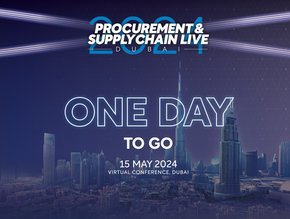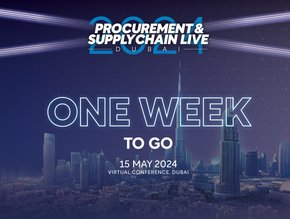The Art of Supply Chain Planning with Gartner, SAP, Kinaxis

The supply chain space is awash with differing descriptions of supply chain planning (SCP) and what it actually encompasses.
From Gartner’s perspective, SCP is defined as the process of optimising the delivery of goods, services and information from supplier to customer, balancing supply and demand.
The consulting giant also contends that effective SCP includes what-if scenario analysis and real-time demand commitments.
Technology giant SAP points out that much of the focus when it comes to SCP tends to be on inventory and logistics, but insists there is much more to the planning process when one scratches beneath the surface.
For physical products and manufacturing, it begins with managing the suppliers which produce or extract raw materials, and stretches right up to delivery to a shelf or doorstep.
SCP is also informed by the ever-evolving shopping habits of consumers, not to mention their reviews and feedback.
SCP brings increased agility
Of course, efficient supply chain planning is crucial to helping suppliers, manufacturers and distributors mitigate ongoing disruption.
“Coping and thriving with increasing uncertainty is critical for supply chain planning leaders,” says Lusi Zheng, Senior Director in Gartner's Supply Chain Practice.

Clearly, these decision-makers recognise the need to be able to pivot and adjust when unforeseen issues arise. According to Gartner’s research, almost four out of five supply chain leaders believe being agile is the top priority within their function.
Lusi's take is that planners will often only consider operational agility, when two other factors warrant being taken into consideration.
“One is design agility,” she said during a recent conversation with SupplyChainBrain. “How do we structure our capabilities and processes to enable us to be able to respond? Maybe it’s making our processes more composable."
Then, there is “offer agility”. Explaining this, Lusi asks: “Within our existing design and structure, how can we add flexibility, especially for the customers that matter the most?”
Integrating technology
Inevitably, emerging technologies like generative AI are increasingly coming into the SCP conversation.
While fresh research from SAP UK & Ireland finds that cost savings is perceived as the main benefit associated with using AI, contingency planning and enhanced inventory management follow closely behind.

“Traditional supply chain management processes are not fit for purpose to address the volume and variety of disruption that exists today,” comments Ryan Poggi, Managing Director at SAP UKI. “Future AI innovation, especially GenAI, will change this and is the greatest opportunity since the rise of cloud.”
However, it’s important to view the integration of technology into the supply chain planning process in a certain light.
Gartner emphasises that organisations often mistakenly view SCP technology implementations as IT projects, while planning and tech leaders end up speaking different languages when it comes to solutions and prioritisation.
The answer is to have a clear strategy in place – or even a supply chain planning technology roadmap – to embrace the new software.
Kinaxis’ SCP solution
Also flying the flag for AI is supply chain management specialist Kinaxis, which argues companies should be automating manual tasks with configurable and expandable intelligent algorithms and analytics.

The Supply Planning element of Kinaxis’ own RapidResponse software is helping leaders navigate a series of potential pitfalls and disruptions. In a recent interview with Supply Chain Digital, the organisation’s CTO Giovanni Pizzoferrato discussed the platform’s contribution to the Microsoft Azure ecosystem.
He also outlined how RapidResponse was helping some of the world’s leading pharma companies in their management of supply chain complexities.
“The regulatory environment is very complex in pharma,” said Giovanni, “so our software uses embedded, attribute-based planning specifically for this challenge.
“Planners use RapidResponse to get a clear view of what’s on-shelf, what’s about to expire, what the demand patterns look like and what supply plans will meet consumers’ future needs.”
******
Check out the latest edition of Supply Chain Magazine and sign up to our global conference series – Procurement and SupplyChain LIVE 2024.
******
Supply Chain Digital is a BizClik brand.
- Gartner: AI set to Dominate Procurement Contract ManagementProcurement
- Global Supply Chains at Full Throttle: GEP Index May 2024Supply Chain Risk Management
- Kinaxis Named Leader by Gartner for Supply Chain SolutionsOperations
- QAD: Digitally Transforming Your Warehouse OperationsDigital Supply Chain






